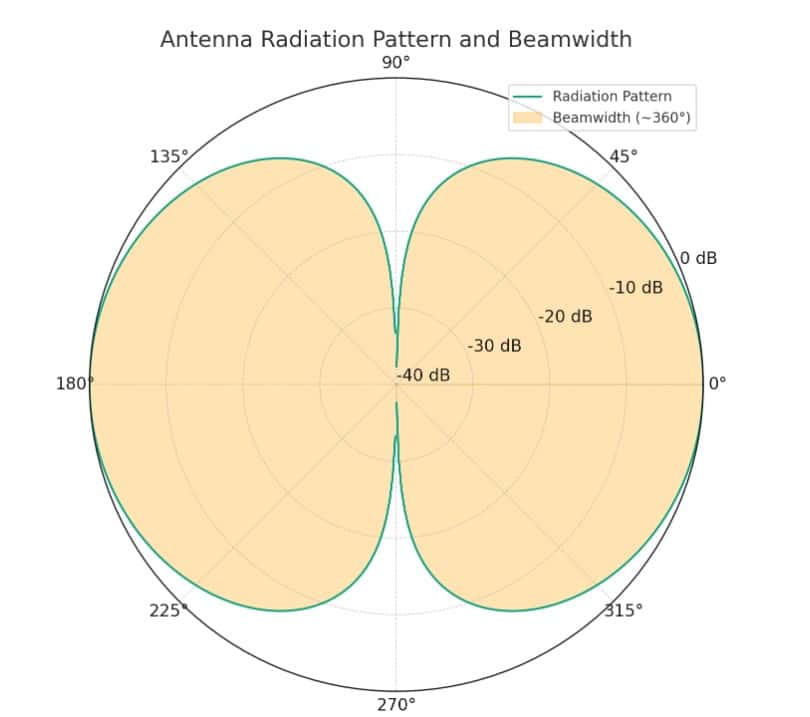
question specific learning
Transforming Knowledge Into Understanding
Hamshack.ca is completing the fully updated Basic Amateur Radio Course, built from the ground up to match the latest ISED syllabus and question bank. The new course is now in the final QA and testing stage, with launch expected shortly. It features clear, easy-to-follow lessons, embedded answers, interactive quizzes, real-world examples, and full mobile compatibility — everything you need to prepare confidently for your Basic Qualification.
The Advanced Amateur Radio Course remains fully available and unchanged. It continues to use the proven QSL (Question Specific Learning) methodology to provide deeper understanding, exam-focused content, and a highly structured learning path designed specifically for Canadian operators who want to upgrade their certification.
Contact VE7DXE
Contact VE7DXE for enrollment details and course reservations.
Log into your hamshack.ca account to access the QSL Advanced Course. Don’t have an account? No problem, request an account here. Good luck with your studies!

7.1. antenna tuner/transmatch, impedance matching circuits
The ‘7.1 Antenna Tuner/Transmatch, Impedance Matching Circuits‘ course, the first in the Feedlines – Matching and Antenna Systems section at Hamshack.ca, uses the Question Specific Learning (QSL) approach to simplify the essentials of power transfer in amateur radio. It covers various antenna tuners—transformer-type, series-type, L-type, and Pi-type—and their roles in effective impedance matching, crucial for optimizing power transmission to antennas. The course also delves into impedance matching networks like the pi-network and pi-L network, and introduces the Smith Chart, a key tool for solving impedance and transmission line challenges. Designed for amateur radio operators seeking to enhance their setup’s performance, this course offers a clear understanding of the critical components and tools needed for efficient system optimization.

7.2. velocity factor, the effect of line terminated in non-characteristic impedances
The ‘7.2 Velocity Factor, the Effect of Line Terminated in Non-Characteristic Impedances‘ course within the Feedlines – Matching and Antenna Systems section at Hamshack.ca, utilizing the Question Specific Learning (QSL) approach, focuses on two pivotal concepts in amateur radio: the velocity factor and the implications of terminating transmission lines with non-characteristic impedances. This chapter explains how the velocity factor, influenced by the transmission line’s dielectric material, dictates signal speed through the line and its impact on antenna design and signal timing. It also explores the consequences of mismatched impedance terminations on transmission lines, leading to impedance transformations that can affect signal integrity. Through detailed examination and practical examples, this course equips radio enthusiasts and professionals with essential knowledge on optimizing transmission lines and antennas for improved radio communication system performance, highlighting the critical nature of understanding both velocity factor and impedance effects for effective system design.

7.3. antenna feed arrangements – tee, gamma, stubs
The ‘7.3 Antenna Feed Arrangements – Tee, Gamma, Stubs‘ course, a key part of the Feedlines – Matching and Antenna Systems section at Hamshack.ca, adopts the Question Specific Learning (QSL) strategy to demystify antenna feed arrangements critical for efficient radio communication. This chapter focuses on the intricacies of Tee, Gamma, and Stub matches, essential techniques in amateur radio and RF engineering for matching antennas to transmission lines. It begins with the T match, crucial for connecting differing impedances and ensuring smooth communication flow. The exploration then moves to the gamma match, widely used in Yagi antenna systems for its versatility and efficiency in balancing the antenna system over various frequencies. Lastly, the stub match is discussed as a practical solution for impedance matching when other methods are too complex, including how to calculate coaxial stubs’ lengths for specific frequencies. This comprehensive examination provides enthusiasts and professionals with the tools and understanding needed to design and fine-tune antenna systems for optimal performance, illustrating the practical applications and significance of each matching technique in real-world scenarios.

7.4. current and voltage distribution on antennas
The ‘7.4 Current and Voltage Distribution on Antennas‘ course, part of the Feedlines – Matching and Antenna Systems section at Hamshack.ca, uses the Question Specific Learning (QSL) approach to delve into the complexities of antenna behavior, specifically through the lens of the half-wave dipole. This chapter focuses on the intricate patterns of current and voltage distribution across the antenna, highlighting the electromagnetic principles that dictate signal transmission and reception. By examining the half-wave dipole’s characteristics—such as voltage highs at the ends and current peaks at the center—and understanding impedance’s effect on antenna efficiency, learners gain valuable insights into antenna design and optimization. Bridging theoretical knowledge with practical ham radio applications, this course equips enthusiasts and professionals with a deep understanding of antenna performance, crucial for enhancing communication systems and resolving common radio setup issues.

7.5. polarization, helical beam, parabolic antennas
The ‘7.5 Polarization, Helical Beam, and Parabolic Antennas‘ course, a key installment in the Feedlines – Matching and Antenna Systems series at Hamshack.ca, adopts the Question Specific Learning (QSL) approach to unfold advanced antenna concepts vital for amateur radio operators. This chapter dives into the nuanced world of antenna polarization, exploring how its various forms—circular, vertical, and horizontal—affect signal transmission efficiency. It highlights the design and functionality of helical beam antennas, renowned for their polarization versatility, and parabolic antennas, distinguished by their high-gain performance. These sections offer insights into optimizing antenna selection and configuration for specialized communication needs, from satellite links to long-distance terrestrial communication. By integrating theory with practical applications, this course equips learners with the sophisticated understanding necessary to excel in the modern amateur radio landscape, especially for those pursuing advanced qualifications.

7.6. losses in real antenna systems, effective radiated powers
The ‘7.6 Losses in Real Antenna Systems and Effective Radiated Powers‘ course, part of the Feedlines – Matching and Antenna Systems series at Hamshack.ca, simplifies complex antenna system concepts using the Question Specific Learning (QSL) method. This chapter ventures into the critical understanding of Effective Radiated Power (ERP), a fundamental aspect that dictates the performance of antenna systems in amateur radio. Focusing on the real-world implications of ERP, it guides learners through the factors influencing a signal’s strength, including transmitter power output, transmission line losses, and antenna gain. By dissecting these elements, the course aims to equip amateur radio operators with the knowledge to accurately measure their system’s ERP, ensuring optimal use and legal compliance. It also delves into the practical challenges of managing losses and maximizing gains within antenna systems, offering insights into real-world scenarios that every advanced operator might face. This comprehensive approach not only enhances technical proficiency but also empowers operators to make informed decisions to optimize their communication setups.

7.7. ground and elevation effects, vertical radiation (take off) angles
The ‘7.7 Ground and Elevation Effects, Vertical Radiation (Take Off) Angles‘ course, within the Feedlines – Matching and Antenna Systems series at Hamshack.ca, leverages the Question Specific Learning (QSL) approach to demystify the complex relationship between antenna performance and its physical surroundings. This chapter sheds light on how the proximity to the ground and the antenna’s elevation significantly shape radiation patterns, essential for optimizing communication reach in amateur radio. By exploring the effective ground plane and the impact of ground reflections on antennas like Yagis and dipoles, learners gain insights into the strategic positioning of antennas to leverage or mitigate these effects. Moreover, the course delves into vertical radiation angles, crucial for achieving long-distance contacts, guiding operators on how to adjust their antennas to maximize directivity and signal strength. This comprehensive examination equips amateur radio enthusiasts with the necessary tools to enhance their setup for local and DX communications, emphasizing the practical applications of antenna theory in real-world scenarios.

7.8. radiation resistance, antenna efficiency, beamwidths
The ‘7.8 Radiation Resistance, Antenna Efficiency, Beamwidths‘ course, part of the Feedlines – Matching and Antenna Systems curriculum at Hamshack.ca, utilizes the Question Specific Learning (QSL) method to clarify essential concepts for optimizing antenna systems. This chapter dives deep into the fundamental aspects of radiation resistance, which determines an antenna’s ability to radiate energy; antenna efficiency, quantifying the conversion of electrical power into electromagnetic waves minus any losses; and beamwidths, which are vital for understanding the directional focus of an antenna. These principles are critical for amateur radio operators to grasp in order to make informed decisions about antenna design, setup, and adjustment for enhanced performance. Through this course, operators will gain a comprehensive understanding of how to improve their antenna systems, focusing on maximizing energy radiation, minimizing losses for greater efficiency, and optimizing directional focus for precise communication needs.
Hamshack.ca provides original, Canadian-focused amateur radio training through its Basic and Advanced Courses, along with new courses currently in development. All instructional text, explanations, diagrams, illustrations, quizzes, assessments, and related materials have been developed exclusively for Hamshack.ca learners and form a complete proprietary educational system.
© All course content—including lessons, graphics, instructional methods, practice exams, and supporting materials—is fully copyrighted and protected under intellectual property law. Users receive a personal, non-transferable license to access the material for their own learning. Copying, sharing, redistributing, republishing, or using any part of the course content for commercial or instructional purposes is strictly prohibited without written permission from the site owner.
For full details on usage rights and restrictions, please refer to the Hamshack.ca Terms of Use.












